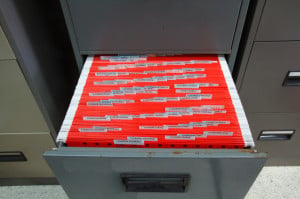
Moving the company's financial documents from a physical filing cabinet to an online document repository is a smart move, allowing for greater security and flexibility. The first step is to vet your options and ensure the virtual data room or other document storage service you choose has the proper security controls and features you need. After that's done, you may wonder want to do next. Use the tips below to transition from a paper-based system to an online corporate repository.
-Create folders - How you structure your corporate repository is up to you. However, your folder hierarchy will impact users, making it important to create a folder structure that is both well organized and user friendly. For example, you might create main folders for corporate records, financials, and material agreements. Within each main folder, you could then create subfolders and sub-subfolders if needed.
-Create user roles and permissions - Next, set up user roles and permissions. You may not know who the actual individuals are at this point. However, you do know that certain categories of users will need different levels of access. Think about the different needs of CFOs, investors, auditors, department heads, and others who may need access to the corporate repository and assign the bare minimum permissions possible for the job role. This gives you a starting point. You can always add permissions on a case-by-case basis.
-Set up non-disclosure agreements - Access to your corporate repository should be granted only after a user has signed a non-disclosure agreement. Depending on the solution you have selected, you may need to do this manually and then upload a copy of the signed agreement after the fact. With SecureDocs, NDAs are both customizable and automatic. Once you've configured your NDA, the system will prompt users to sign before they are granted access to a protected document.
-Upload documents - Now that the basics are in place, it's time to start uploading documents to your corporate repository. You may need to use a scanner to digitize some of your paper-based files. If you've chosen a solution that allows for drag and drop uploads of folders and documents, getting everything into the data room will be simple. Start with the first folder you created and work your way down the hierarchy. Remember to place documents in the most appropriate folder or subfolder. At this point, you may find that you overlooked a category. Make new subfolders as needed, paying special attention to your existing structure.
-Assign permissions - As you upload documents into your repository, you will need to assign permissions. For each user role, you can designate specific permissions to a folder or document such as: no access, view only, download, or full access.
-Invite users - Finally, it's time to invite users to your corporate repository. It's not a bad idea to start with a few trusted colleagues to test the system and make sure it's ready for real-world use.
Setting up an online document repository isn't overly difficult, especially if you choose a solution with a simple user interface such as SecureDocs. With a well-organized structure and the right user roles and permissions, your end-users should be able to find what they need without compromising security.





